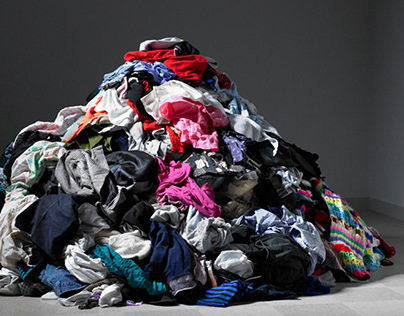INSIDE THE FASHION INDUSTRY - Costing & Profit Margins: High Fashion VS Fast Fashion
- Barbara Sessim

- Jun 2, 2022
- 5 min read

One of the most asked questions about the fashion industry is what is the difference between fast fashion and high fashion brands. Production quantities are one of the main points, but this is not the only one and it is also not the most important one. When we are talking about fast fashion and wholesale, the costing and profit margins involved are the two main factors that can distinguish this industry.
I have done it all. Fast fashion, high fashion, wholesale, dog wear (lol, but for real), babies… Everything related to sewing machines I have done. But, if you have read my previous blogs, you would know that the business and logistics involved in this industry are what fascinates me. No wonder my current job is as a costing coordinator. So it is time to open up a little more about how this works.
As I said, costing and profit margins are the two main factors that can distinguish this industry, but how these factors work is what we are breaking down here.
1. Production costing
Offshore or not offshore production, the deal here is that: the more units you produce, the less it will cost. Vice versa! But there is a reason why this happens.
First, with so many tariffs and importation taxes from other countries, nothing tends to be much cheaper right now (especially importing from China). But, one of the main reasons why producing more units is cheaper is because it makes sense for the manufacturer.
Let’s say you are producing a silky dress with a low back cut, seams in the front, and an invisible zipper on the side. While producing 3000 units of this dress takes the same amount of people to produce 250 units, the profit margin that the manufacturer is making is completely different.
Regardless of the manufacturer, high fashion and fast fashion have very different profit margins. The cost and the quantity of the products are what distinguish them and directly affect those margins.
2. Profit margins
When we talk about high fashion and smaller production quantities, your cost to produce each garment is higher, but so is your profit margin. If you are producing a garment that costs you $200 just for production, you know that you will sell it for, at least, double the price. You see a profit margin of $200 or more, by selling one item - which means that producing fewer quantities still brings you to a decent profit margin. In fast fashion, things work very differently…
When it is about fast fashion and massive production (like brand distributors that only do wholesale), depending on the garment, the production cost can be as low as $5 per piece. That is why producing low quantities does not make any sense.
Do the math with me:
To produce a dress it costs $200. If I produce 500 units and I am selling it for $400 each = $400 (each dress) * 500(units) = $200,000
My profit margin is $1000,000
To produce a cheaper dress will cost $5. So, if I produce 500 units and sell it for $10 = $10(each dress) * 500(units) = $5,000
My profit margin is $2,500
See the math happening here? Even though this is not rocket science, a lot of people do not understand how massive production can be so cheap and how stores can sell their products for a cheap price. Because, in fast fashion, the production numbers have to be as high as 3,000 or 10,000 units, otherwise, where is the money coming in?
The industry standard is to add 1.25% when you are selling wholesale and double the price when you are doing direct to consumer. This is wrong. This is actually not accurate at all.
Fast fashion or not, when production costs can be as low as $3, brands tend to readjust their profit margin to 200% or 400% even. Especially when you are doing direct to the customer, you are not a fast-fashion chain (like All Saints, for example), and your quality is good - I am not saying that this is All Saint’s profit margin, I am using them as a good example of direct to the customer who does massive production, sells everywhere, could lower their cost and increase their international growth in a matter of years.
Another really good point about profit margins is wholesale. A lot of people do not know, but big fast-fashion chains, like Target and Forever 21 do not produce their things. Everything is done through wholesalers and private labels. While the wholesaler producing for those big chains, most times, is getting a minimum of 200% profit margin (since production is so cheap), the stores that are selling directly to customers do not always have a high-profit margin. The opposite!
3. Wholesale
The truth is, if you are a fast fashion brand, you need to keep your costs low - because your selling price point is low. People imagine that production cost is so low in fast fashion, that stores like Forever 21 can actually charge double the price they are paying, but this is not true.
Fast fashion stores, sometimes, make as low as $4 or $6 profit on certain items. How? Let’s math again: if you are a fast fashion store and you buy from wholesalers or private label producers, your vendor is already charging you about $10 for a simple dress (because your wholesalers are adding his profit margin on top of his production cost), and you need to order at least 4,000 of that dress. You will not be able to sell 5,000 dresses for $20 because this is not your customer price point BUT, if you sell them for $16 you still make a profit and you will be able to sell all your inventory. Does that make sense?
I know this is a lot and a lot to follow, but believe me, none of this is rocket science. In this industry, there are more corners and behind the scenes, than you all can imagine, and, honestly, when you think you have seen it all, you still learn - which is one of my favorite things to do.
Wholesale might seem complicated, but it is actually a really good option to pursue when you are trying to grow your business and decrease your costing. Good and “smaller” brands can also do wholesale and keep the quality. Arias is a lovely brand with a boutique in Soho but also selling at Neiman Marcus. Shop We Wore What, by Danielle Bernstein, is also another great example.
Every time I am talking numbers it seems to be a complicated blog. Especially with my non-native speaker kind of writing. I got it! But when talking numbers there is also no rocket science, it is just how the math works. A lot of people tend to think that wholesale and fast fashion is only because of production quantities, but the truth is that fast fashion and wholesale only make sense because of the profit margins behind them. Fast fashion might be one thing that people are trying to avoid more and more, but wholesale does not mean that it has to be a massive production or bad quality. It can help your business to grow and, mostly, improve profits.







Comments